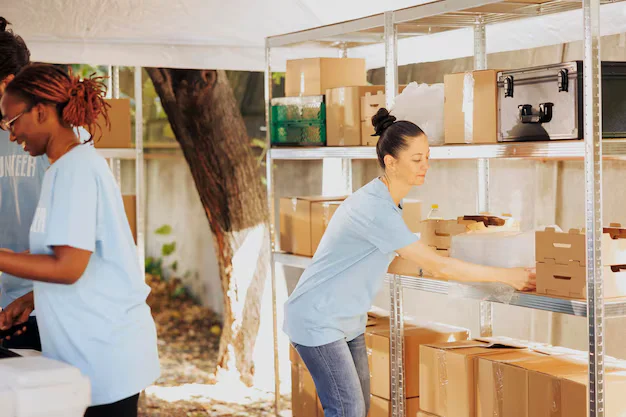Physical Address
304 North Cardinal St.
Dorchester Center, MA 02124
Physical Address
304 North Cardinal St.
Dorchester Center, MA 02124

Whether you’re tackling a household project, organizing an event, cooking a meal, or engaging in DIY activities, preparation and cleanup are critical components that can make or break your success. Properly planning and executing these stages not only enhance safety and efficiency but also ensure you achieve the best possible results. In this comprehensive guide, we’ll explore all aspects of preparation and cleanup, providing practical tips, best practices, and strategies to help you approach every task with confidence and effectiveness.
The significance of
and
extends beyond mere organization. They are essential to:
To truly master preparation and cleanup, understanding their interconnected roles is vital. Proper preparation lays the foundation for successful work, while meticulous cleanup ensures environmental safety and sustains your tools’ longevity.
Start by clearly defining what you aim to accomplish. Whether painting a room or hosting an event, setting specific goals helps in organizing the necessary steps and resources.
List all the items you’ll need. This prevents last-minute runs to the store and guarantees you’re fully prepared—saving time and avoiding frustration.
Break down your project into phases with estimated start and finish times. Using tools like digital calendars or project management apps can help keep you on track.
If working with others, delegate responsibilities. Clear role distribution promotes cooperation and efficiency.
Choose tools suited to the specific task. For instance, use non-abrasive cleaners for delicate surfaces or heavy-duty equipment for construction.
Check batteries, fluid levels, and overall functionality before starting. Well-maintained equipment reduces breakdowns and delays.
Always wear gloves, goggles, masks, or other PPE when handling potentially hazardous materials or performing risky tasks.
Remove obstacles, clutter, or unnecessary items to create a spacious, safe environment conducive to work or planning.
Spot loose wires, spills, or unstable surfaces early to prevent accidents.
Proper airflow and lighting improve safety and comfort, making the task easier and safer.
Use drop cloths, plastic sheets, or protective tapes to safeguard furniture or floors.
Clear pathways to facilitate movement and reduce tripping risks.
Designate specific areas for tools, materials, and waste disposal for streamlined workflow.
Cleaning up right after completing your task prevents messes from becoming overwhelming and keeps the workspace safe and organized.
Dispose of rubbish properly—recycling where possible—to minimize environmental impact. For more eco-friendly practices, visit EPA Recycling Guidelines.
Follow local regulations for disposing of hazardous or specialized waste.
Use appropriate cleaning agents—like mild soap, disinfectants, or specialized cleaners—and techniques (wiping, scrubbing) based on the surface type.
Vacuum, mop, or scrub as needed. Regular maintenance extends tool lifespan and preserves surfaces.
Select eco-friendly solutions whenever possible to support environmental sustainability.
Wipe down tools after use, sharpen blades, and replace worn parts to ensure readiness for future tasks.
Use labeled bins, shelves, or cabinets to keep items accessible and in good condition.
This simplifies retrieval, especially in multi-user environments.
Walk through the space to confirm cleanliness and safety compliance.
Take corrective actions to fix missed spots or hazards.
Check that all equipment is stored properly to avoid loss or damage.
Always prioritize PPE, including gloves, goggles, and masks, when handling hazardous materials or power tools.
Read instructions and follow guidelines to prevent accidents. For detailed safety standards, visit OSHA Safety Guidelines.
Store and dispose of chemicals properly, and use in well-ventilated areas.
Plan extra time for unexpected delays or complications.
Rushing often leads to mistakes or accidents. Schedule tasks into manageable blocks.
Be adaptable; have contingency plans in place.
Maintain records of tasks completed to prevent oversight.
Track what worked well or what needs improvement for subsequent projects.
Reuse packaging, compost biodegradable waste, and minimize single-use items.
Separate recyclable materials and find ways to repurpose leftover supplies.
Choose biodegradable, non-toxic cleaners to protect the environment and your health.
Set periodic check-ups for tools to prevent breakdowns.
Clean and dry tools to prevent rust and deterioration.
Store tools in appropriate environments, away from moisture and extreme temperatures.
Use correct posture and methods to prevent injury when lifting heavy objects.
Encourage a safety-first mindset—report hazards immediately.
Wear PPE consistently to minimize exposure to hazards.
| Challenge | Solution |
|---|---|
| Unexpected messes or spills | Keep spill kits handy; address spills immediately to prevent staining or accidents. |
| Equipment malfunctions | Perform regular maintenance; have backup tools available. |
| Time overruns | Plan buffer time; prioritize critical tasks. |
| Difficulty organizing tools | Implement labeled storage systems; declutter regularly. |
| Handling hazardous waste | Follow local disposal regulations; use designated containers. |
Mastering preparation and cleanup is essential for any successful project—big or small. A thorough approach enhances safety, boosts efficiency, and ensures superior results. Using detailed planning, organized execution, and meticulous post-task cleanup, you set yourself up for success each time. Remember, the key lies in consistent adherence to best practices, safety protocols, and environmental responsibility. Investing time in preparation and cleanup ultimately pays off with smoother workflows, safer environments, and better outcomes.